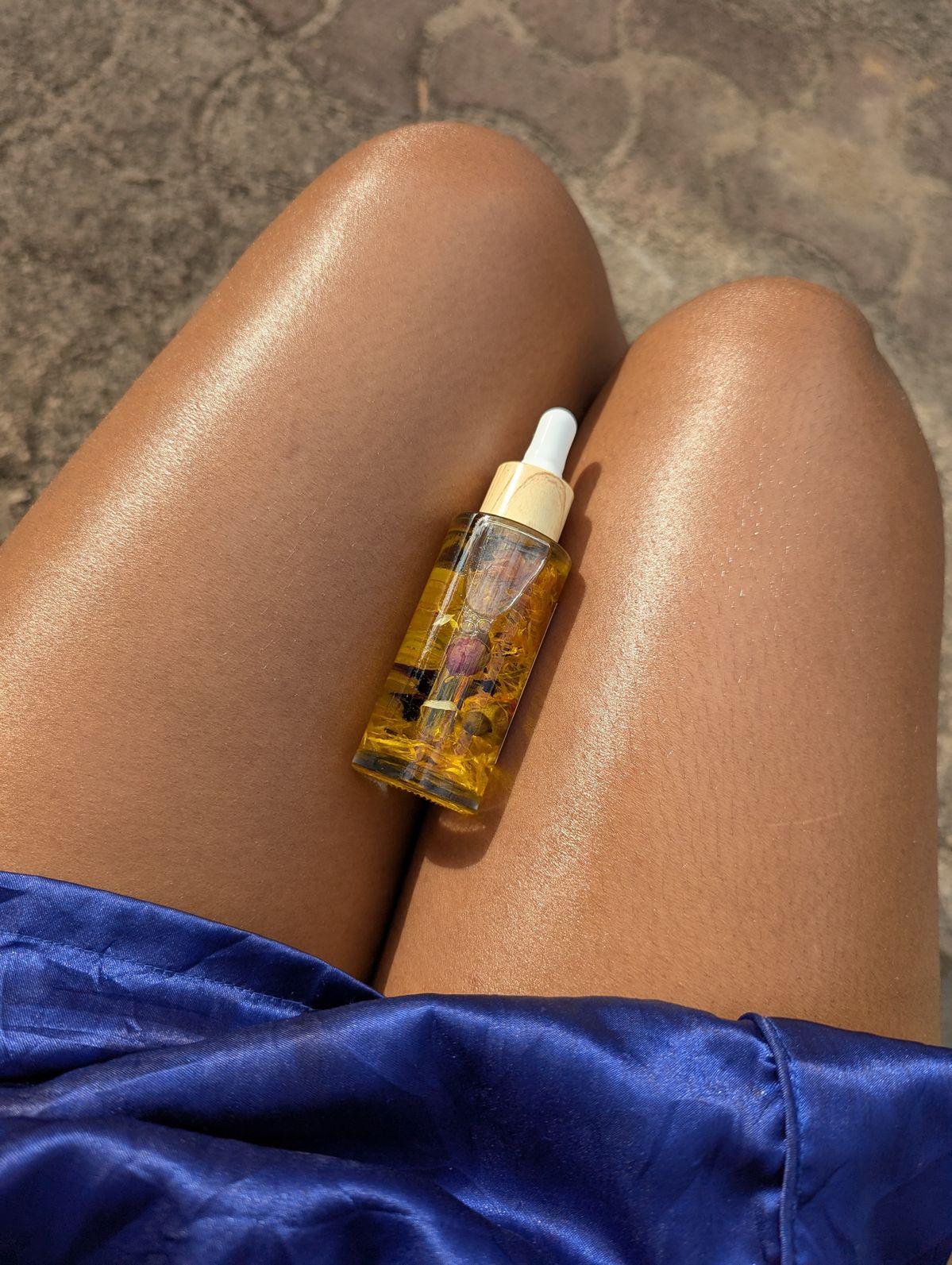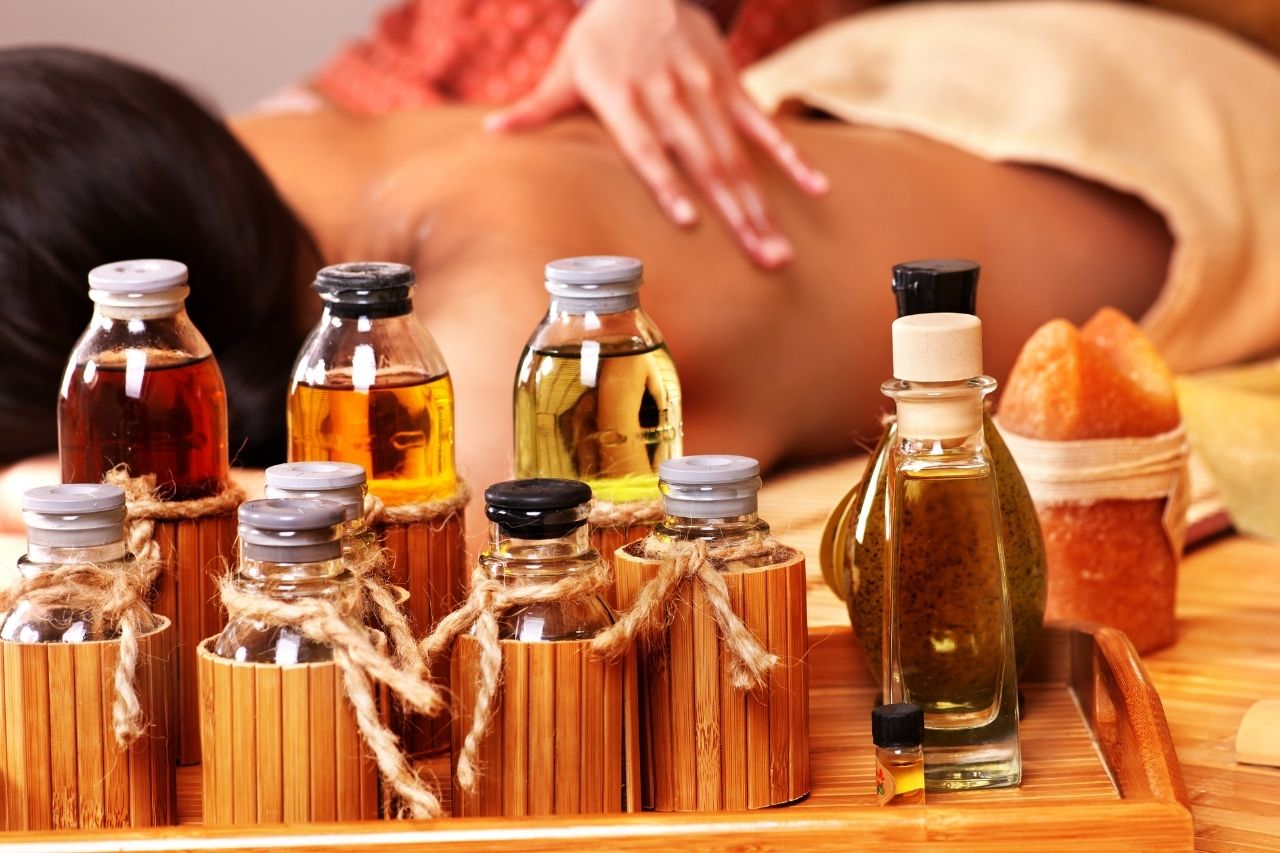For centuries, body oils have held a shimmering place at the heart of beauty rituals, serving as a symbol of luxury, care, and self-indulgence. Ancient queens and empresses were said to bathe in aromatic oils, their skin glistening under the flicker of candlelight. Cleopatra, renowned for her luminous complexion, reportedly favored golden blends infused with myrrh and rose. Meanwhile, in India, Ayurvedic traditions celebrated abhyanga, the daily ritual of massaging warm oils into the skin not only for beauty, but also to nourish and heal the body and mind.
Yet in today’s skincare landscape, the allure of oils has become intertwined with what some call the “body oil myth.” Many still ask: do these silky elixirs truly moisturize, or do they merely provide a fleeting, surface glow? As the clean beauty movement continues to evolve, this question lingers, challenging us to rethink one of the oldest and most enduring secrets in skincare.
Breaking Down the Body Oil Myth
The so-called body oil myth suggests that oils simply sit on the skin’s surface, locking in moisture temporarily without truly hydrating. In reality, the truth comes from understanding how these oils actually work. On their own, oils don’t add water to the skin; rather, they act as a seal. Applied to slightly damp skin, body oils create an occlusive layer that traps moisture, helping prevent dehydration throughout the day.
What makes this especially intriguing is how the type of oil influences the effect. Lighter oils, such as jojoba and grapeseed, absorb quickly, leaving a soft, natural finish, while richer oils like almond and coconut linger longer, creating that signature radiant sheen. When used correctly, the so-called myth transforms into fact: body oils do keep skin soft and supple, but only when applied with intention and care.
Body Oil in Ayurvedic and Ancient Beauty Traditions
The use of oils stretches back thousands of years, long before modern lotions or serums existed. In Ayurveda, abhyanga is considered a sacred ritual of self-care, where warm sesame or coconut oil is massaged into the body before bathing. This practice not only nourishes the skin but also boosts circulation and soothes the nervous system.
Likewise, ancient Egyptians and Romans prized oils such as moringa, olive, and castor for their beautifying—and often medicinal—properties. Glowing skin was more than a symbol of vanity; it signified balanced health and inner vitality. Today, the renewed interest in these traditions suggests that what some dismiss as the “body oil myth” may, in fact, be centuries-old wisdom rediscovered.
Do Body Oils Moisturize or Just Add Shine?
This question lies at the heart of the body oil myth debate. Some users swear by oils that leave their skin glowing in the morning light, while others insist they dry out too quickly. The truth, however, is more nuanced. Oils don’t hydrate the skin in the same way water-based creams do, but they excel at locking in moisture once it’s already present.
Consider applying body oil right after a shower, while the skin is still damp. The water clings to the skin, and the oil seals it in, resulting in long-lasting softness. On dry skin, by contrast, oils can feel slick and ineffective because there’s no moisture to trap. In other words, body oils may appear to add only shine, but when used correctly, they actually help maintain the hydration your skin already has. It’s all about timing and technique.
Can Daily Use of Oils Clog the Skin?

Another aspect of the body oil myth that often gives people pause is the concern that daily use can clog pores. The truth isn’t entirely black and white. It largely depends on the type of oil chosen.
Heavier oils, such as coconut or mineral oil, can be comedogenic for some, meaning they may block pores, particularly in acne-prone areas. Lighter, fast-absorbing options like jojoba, rosehip, or squalane, on the other hand, closely mimic the skin’s natural sebum and are far less likely to trigger breakouts.
When paired with the right oil for your skin type, daily use can be highly beneficial. Dry skin thrives with richer, more nourishing oils, while those with oily or sensitive skin fare better with featherlight, non-comedogenic blends. Ultimately, it’s not a matter of avoidance but of balance and knowing which oil works for you.
Choosing the Right Body Oil for Your Skin Tone

To fully debunk the body oil myth, it helps to consider how different oils perform across various skin tones and types. After all, every complexion deserves its own moment of glow.
- Body Oil for Fair Skin: Opt for oils rich in antioxidants, such as camellia or rosehip. They provide a luminous glow without feeling greasy, while protecting delicate skin from redness and dryness.
- Body Oil for Dry Skin: Almond, shea, and avocado oils deeply nourish, creating a silky layer that keeps flakiness at bay.
- Body Oil for Dark Skin: Coconut, argan, or marula oils enhance natural radiance, beautifully highlighting deeper tones and leaving the skin healthy and illuminated.
- Body Oil for Caramel Skin: Jojoba and grapeseed oils offer a golden sheen while providing light hydration, making them perfect under body shimmer or perfume for an evening out.
Shop editor’s finds
These examples show that body oil is far from one-size-fits-all. It’s personal, cultural, and deeply sensory—a ritual that adapts to each individual’s skin and lifestyle.
Final Thoughts
In 2025, the conversation around body oil feels both nostalgic and forward-looking. Clean beauty brands are revisiting age-old recipes with modern formulations, blending cold-pressed botanicals with fast-absorbing technology. From luxury labels to indie apothecaries, oils are being rediscovered not as a passing trend, but as timeless essentials in body care.
Ultimately, the body oil myth dissolves into a simple truth: body oils do work—but they work best when we understand how to use them. A few drops after a warm shower, a slow massage before bed, or a subtle layer before a night out—each ritual becomes a story of care, mindfulness, and connection. Perhaps, in these everyday rituals, lies the secret that ancient queens always knew.
Featured image: De La Heart
For the latest in fashion, lifestyle, and culture, follow us on Instagram @StyleRave
—Read also
The New Beauty Secrets Today’s Woman Swears By
